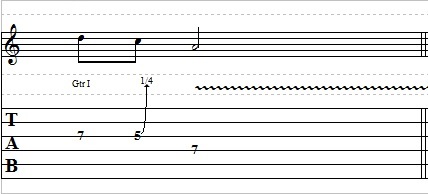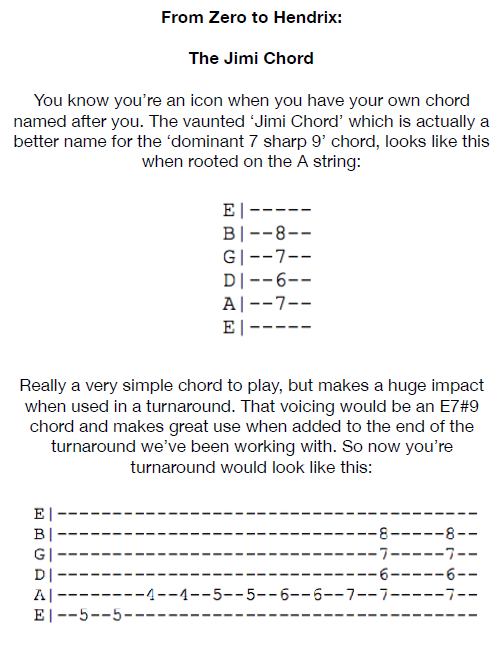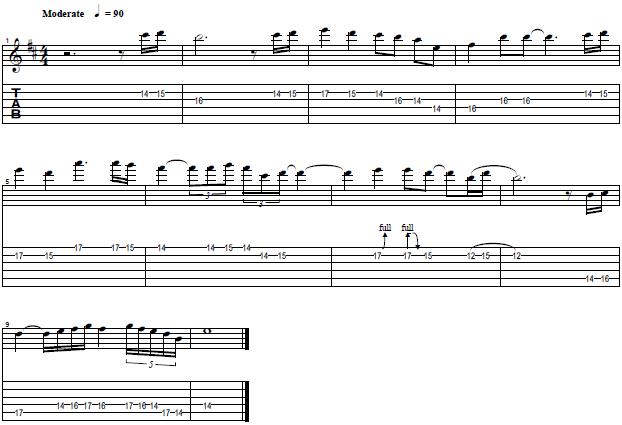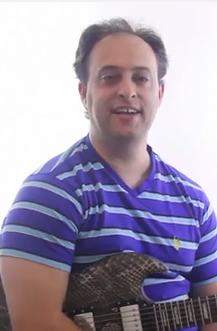Guitar Control presents instructor Darrin Goodman demonstrating how to solo with the major pentatonic scale over a 12 bar 1-4-5 blues chord progression. Be sure to click the link for the tabs to go along with this lesson.

Introduction
Hey everybody how’s it going? This is Darrin with GuitarControl.com bringing you this video lesson. Today I want to go over how to use the pentatonic major scale. So the other day I did a backing track, a blues backing track, that utilizes using the major pentatonic and I got a lot of questions about it. So what we’re going to do here is we’re going to go over what the difference is between major pentatonic and minor pentatonic and how to use it and apply it to what we’re playing here. So be sure to click on the link in the description for the tabs and let’s get close up and take a look what we got going on here.
Matching Chords With Scales
All right so this backing track is in E and it’s just a one four five, your typical you know blues; so four bars are the one chord, two bars of the four chord, two bars of the one chord, one bar the five chord, one bar the four chord and then two bars of the one or the turnaround and then it would just start over again. If this was just like a typical shuffle thing that you could use the pentatonic minor and it’s going to sound really good, but for this particular thing, because of the chord voicings that I’m using, the one chord is E9, the four chord is A7 and the five chord is B7. So when we play the pentatonic minor scale it starts on an E, you know we’re playing over our one chord, but here’s the problem up here and our second note out of the minor pentatonic scale right there, that’s actually our minor third, it’s what makes this minor, but when we play this E9 or if it was just like an E7, it has a G sharp and it has the major third. So what we’re going to do is we’re going to basically change so we’re using the major third instead of the minor third. So this is the simplest way to do this. In this case you know it’s E. So we know our root note here is E, but before you do the pentatonic minor scale right here you know; 12 15 12 14 12 14 12 14 12 15 12 15. So what we’re going to do to really simplify this is we’re just going to play that same scale shape, but we’re going to move it down a step and a half, so that means your first finger is going to move down one two three frets so that’s gonna put us at the ninth fret. So all of your first finger will play everything at nine and then you’ll use your third or fourth fingers just to complete the rest of it. So in a nutshell what it is that we’re playing C sharp minor pentatonic scale, which actually is making it E major pentatonic. So technically this note here on the ninth fret of the low E is in the scale, but it’s not the root note. So the root note is actually here, but just to simplify things you can just think of it like that, this just gives it a much sweeter sound over these kind of chords because we’re outlining the notes that are within the chord itself. So when we play over the one chord which is E9, we’re going to use the C minor pentatonic. Now you don’t have to just exclusively use that scale. I did another lesson a while back where I showed some alternative ways to play the pentatonic scale and how to hook them together in this whole formula thing that makes it so you can play over these changes. Anyway you can use those other two patterns so I’ll just leave a link for that here so you can check that out and use those other patterns. So if you do that you use those other patterns just remember to start all of them a step and a half lower than you would normally.
Choosing Scale Location
Okay so we’re playing over the one chord we can play this E major pentatonic and then when it goes to the four chord, which is A, so now if we went up here to the 17th fret you know we played the A minor pentatonic, but again we want to use the major, so we’re going to move it down a step and a half so we’re going from 17 down to 14 which is one two three frets down, so now we can play the scale here over the top of that chord and it’s going to sound good and then just simply shift back down to your E pentatonic major because it goes back to the one chord. So then when it goes to the five chord, which is B, again we could go all the way up here, but now we’re just kind of getting cramped and just to kind of make it so we’re not just stuck in this one area I’m gonna move down. So if I move down, here’s B on the seventh fret, so I move down a step and a half so one two three frets and that makes me start here on the fourth fret, which is G sharp and is part of the scale, but here’s our root note… and then it’s after that it’s going to shift back to the one chord again. So this is where the turnaround is, so at this point you can just move back up and start playing in E pentatonic major again. Now technically you could play E pentatonic major the entire time over the top of this, it will sound good, but it just really sounds good when you follow the chord changes.
The Clapton Method
So another alternative thing that you can do here is a thing that I call the Clapton method. So when it’s the one chord I play pentatonic major and then when it goes to the four chord instead of me shifting up to play A pentatonic major, I’m just going to shift up and I’m going to play E pentatonic minor… and then when it goes back down to the one chord again then I’ll shift back to pentatonic major and then when it goes to the five and the four I play pentatonic minor and then when it goes to the turnaround I go back to pentatonic major. So you’re just going between pentatonic major and pentatonic minor, anyhow these are just a couple of ideas of how things you can do with this. Anyway if you use that pentatonic major and you work with it over this backing track it just sounds really good. Now you could play over the top of it and just use pentatonic minor, but it’s just not going to sound as good and when you play that minor third while the major third is being played there you know those notes are going to clash against each other ringing out at the same time. So let’s check out what that Clapton method sounds like…
Conclusion
All right so I hope you enjoyed that and you got something out of it. I hope that clarifies this subject a little bit for you. If you’re still having questions and not quite understanding leave me a comment down below and I’ll try to answer that question. If there’s something you would like to see covered in a future lesson leave a comment about that as well and if you have not already done so please subscribe to the channel and click that notification bell so that we don’t miss out any of the content that we upload throughout the week. Anyway that is all I have got for you today. Thanks for watching and have a great day.
If you really want to dig into the blues check out our best selling course Blues Power




